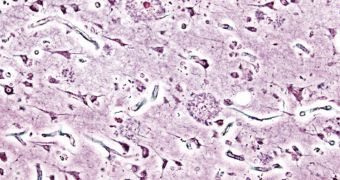According to the conclusions of a new study conducted by investigators at the Washington University in St. Louis (WUSL) School of Medicine (WUSM), analyses of a newly-found biomarker for Alzheimer's disease could reveal how fast mental decline will occur.
Alzheimer's is a neurodegenerative form of dementia. In its early stages, it impairs memory and other small cognitive functions, but then it becomes progressively worse. As there is no cure, the condition is fatal in most cases.
In addition to memory, other higher cognitive abilities degrade as well. Researchers behind the new study say that their investigation reveals a method through which experts could determine how fast this will happen in individual patients.
The approach only functions after the disease was diagnosed, experts say. However, the earliest symptoms of Alzheimer's can appear decades after the disease began developing in the human brain.
During the recent experiments, WUSL scientists determined that Alzheimer's patients who displayed elevated levels of the visinin-like protein 1 (VILIP-1) molecule in the brain tended to experience faster cognitive and memory decline than patients whose brains expressed normal amounts of the protein.
This indicates that the molecule can be used as a biomarker for predicting which patients suffer from more aggressive forms of the condition. The study group conducted this investigation on a group of 60 people already diagnosed with the condition, by measuring VILIP-1 levels in the spinal fluid.
“VILIP-1 appears to be a strong indicator of ongoing injury to brain cells as a result of Alzheimer’s disease,” University of Jordan assistant professor of neurology Rawan Tarawneh, MD, explains. He was the lead author of the research, which was conducted while he was at WUSL.
“That could be very useful in predicting the course of the disease and in evaluating new treatments in clinical trials,” he adds. The team says that the new biomarker will be confirmed only after larger-scale studies are conducted on Alzheimer's patients.
Details of the new study were published in the March 6 issue of the medical journal Neurology. Test subjects were recruited from patients enrolled with the WUSM Charles F. and Joanne Knight Alzheimer’s Disease Research Center.
“These results are intriguing, but we need a larger study to fully understand how the insights provided by VILIP-1 compare to those we can gain from other markers,” Tarawneh concludes.

 14 DAY TRIAL //
14 DAY TRIAL //